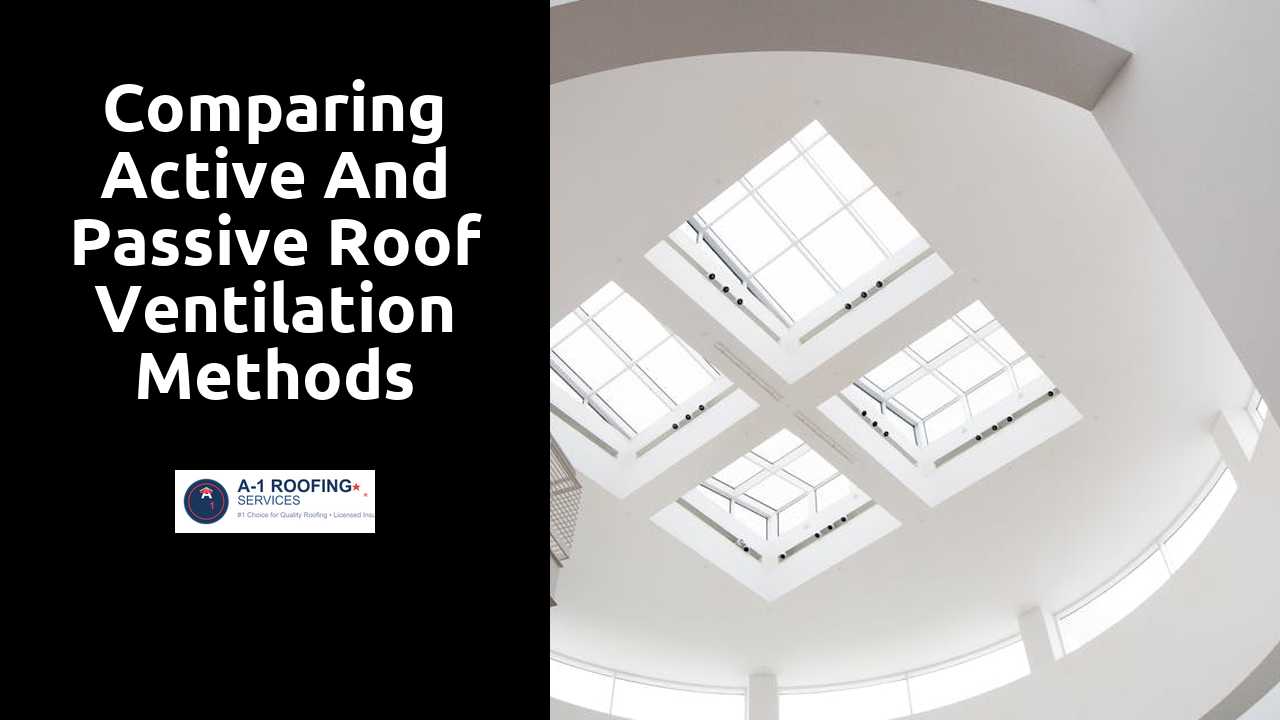
Comparing Active and Passive Roof Ventilation Methods
Table Of Contents
Advantages of Passive Roof Ventilation
One significant benefit of passive roof ventilation is its low maintenance requirements. Once installed, these systems typically operate without the need for electricity or mechanical parts, which means fewer components are subject to wear and tear. Homeowners can enjoy improved airflow and temperature regulation without the hassle of regular inspections, repairs, or operational costs associated with powered systems. This not only conserves financial resources but also contributes to a hassle-free experience.
Another advantage stems from the eco-friendly nature of passive ventilation. These systems rely entirely on natural forces such as wind and thermal buoyancy to facilitate air circulation. As a result, they do not contribute to energy consumption, making them a sustainable choice for those looking to minimize their environmental impact. Using passive solutions allows homes to maintain comfort levels while adhering to environmentally conscious practices.
Have a peek at this blog for further readings.
Low Maintenance Requirements
Passive roof ventilation systems are designed to function with minimal upkeep. These systems typically consist of vents and openings strategically placed in the roof structure, allowing for natural airflow. Once installed, they require little attention, often only needing occasional cleaning to remove debris or blockages that could impede airflow. This low maintenance requirement is particularly appealing to homeowners and building managers looking to reduce ongoing costs and labor associated with ventilation management.
In addition to reduced maintenance efforts, passive systems do not rely on electrical components or moving parts that may wear out or fail over time. This reliability translates to fewer repairs and lower long-term costs. The simplicity of the design means that most issues can be resolved with straightforward interventions, minimizing downtime. Homeowners can enjoy peace of mind, knowing that their investment in passive ventilation will continue to function effectively for years with very little intervention required.
Drawbacks of Passive Roof Ventilation
While passive roof ventilation systems boast several advantages, they are not without their limitations. One major drawback is their dependence on environmental conditions. In certain climates, such as areas with minimal wind or high humidity, these systems may not function as effectively. Consequently, stagnant air can build up within the roof space, potentially leading to heat retention and moisture accumulation that compromise the building's overall performance.
Another concern lies in the variability of effectiveness over time. The performance of passive systems can fluctuate with changes in external weather patterns. For instance, on hot days with still air, such systems may struggle to provide adequate ventilation. This inconsistency can lead to discomfort for inhabitants and may increase energy costs if mechanical systems need to compensate for the lack of natural airflow.
Dependence on Environmental Conditions
Passive roof ventilation relies heavily on natural forces such as wind and temperature differences to drive airflow. This dependence can lead to variability in performance, especially in regions with low wind speeds or high humidity levels. When outdoor conditions are not conducive to airflow, the effectiveness of passive systems diminishes. Homes situated in areas with frequent temperature fluctuations may also experience periods of reduced ventilation efficiency, impacting indoor air quality and temperature regulation.
In contrast, active systems featuring powered fans can maintain consistent airflow regardless of external conditions. As a result, they provide more reliable ventilation performance throughout the year. However, the reliance on electricity for operation introduces its own set of challenges, including potential maintenance issues and dependency on power availability during outages. This comparison highlights the importance of considering local environmental conditions when selecting the most appropriate ventilation method for a given building.
Comparing Effectiveness of Both Systems
When evaluating the effectiveness of active and passive roof ventilation systems, various metrics come into play. Temperature regulation is a critical factor, as active systems often excel in maintaining optimal indoor conditions regardless of external weather. Conversely, passive systems may struggle during extreme heat or humidity, leading to inconsistent temperature control. Air quality is another notable metric; active ventilation can filter and control airflow, ensuring a steady supply of fresh air. In contrast, passive methods depend heavily on natural airflow, which can lead to fluctuations in indoor air quality.
Energy efficiency is a major consideration as well. Active systems typically consume more electricity to function, which could impact long-term operational costs. Passive systems, while generally less energy-intensive, may not provide the same level of performance under conditions that are not conducive to natural ventilation. Noise levels also vary; active systems might introduce mechanical sounds that affect comfort levels, whereas passive systems often operate silently. Each method presents unique advantages and challenges, making the choice dependent on specific environmental and structural factors.
Metrics for Evaluation
Evaluating the effectiveness of active and passive roof ventilation systems requires a set of specific metrics. Temperature regulation serves as a primary indicator, as both systems aim to maintain comfortable indoor temperatures while minimizing energy consumption. Moisture control is another essential factor. Excess humidity can lead to structural damage and mold growth, making it crucial to observe how well each system prevents moisture buildup.
Airflow rate is an important metric too. It quantifies the volume of air exchanged per unit of time, helping to determine how effectively each method ventilates a space. In addition, energy efficiency should also be considered, particularly for active systems that require power. Assessing the energy consumption in relation to the volume of air moved can provide insight into long-term operational costs. Each of these metrics provides valuable information to compare the overall performance of active and passive roof ventilation methods.
Related Links
Evaluating the Costs of Installing Roof Ventilation SystemsHow Roof Ventilation Affects Indoor Air Quality